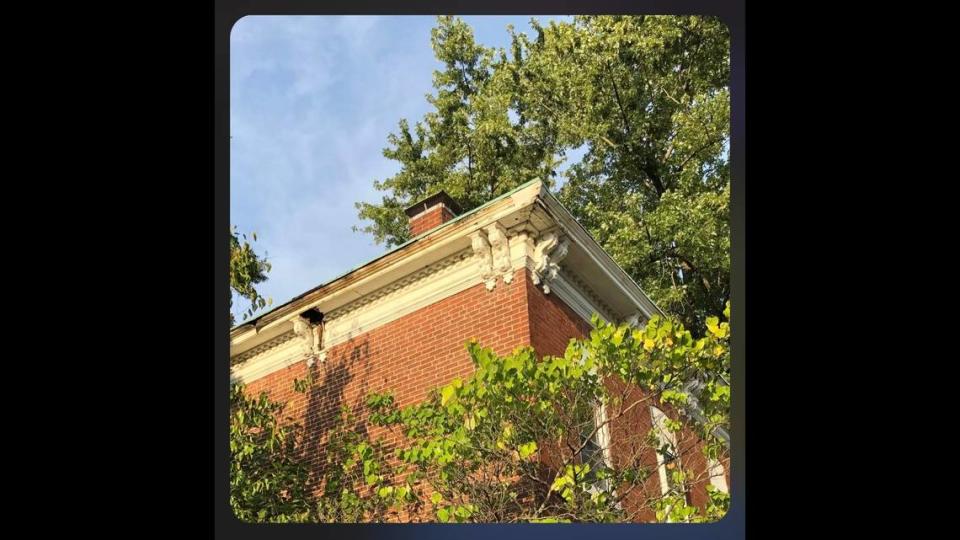Historic ‘mansion’ built by Belleville mining mogul now derelict, may be demolished
- Oops!Something went wrong.Please try again later.
It was once known as “Maule Mansion.”
The two-story Italianate brick home at West C Street and North Fourth Street in Belleville was built in 1878 by John Maule, a prominent Scottish immigrant who owned about 15 coal mines in the region, according to Bob Brunkow, historian for Belleville Historical Society.
Maule also had business dealings with Ulysses S. Grant before Grant became Union Army commander and U.S. president.
“(The home is) important on the basis of the man, as well as the architecture,” Brunkow said. “You can’t build a house like that anymore. It represents a higher-end house at the time it was constructed, and it reflects the coal-mining heritage of this area.”
Today, much of the home’s glory is gone.
The former owners abandoned it after falling behind on property taxes about 10 years ago. Since that time, it’s been occupied by squatters, filled with trash and debris and surrounded by overgrown trees and bushes.
“I keep raising hell about it,” said neighbor Richard Angevine, 74, who has lived on the same block of North Fourth Street for 55 years.
Belleville city officials designated the home “unfit for human occupancy” last year. On Monday, they condemned it.
Condemnation generally means that owners must fix or demolish buildings due to safety or health concerns. If they refuse, the city can go to court, get demolition orders, pay for demolition and try to recoup the money by placing liens on properties.
“My problem is, I only have so much money budgeted (for demolitions) in 2024,” said Scott Tyler, the city’s director of health, housing and building. “And with what I’ve got now, I’m well above that.
“It would be at least a year for sure (before demolition), unless we can come up with a grant or money from somewhere else. I’ve got more properties in much worse shape that need to be torn down, and they’re going to have to fit into that 2024 budget.”
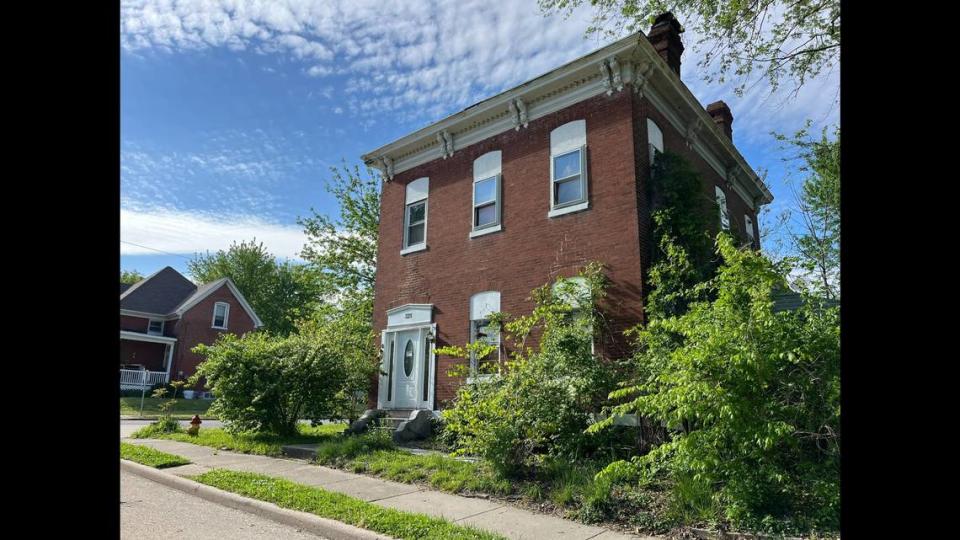
Two unrelated owners
The home at 321 W. C St. is one of many buildings in Belleville that stood for 100 or 150 years before being allowed to deteriorate to the point of becoming health or safety concerns, neighborhood eyesores or both.
But the Maule home has an added complication. It sits on three narrow parcels, one of them owned by St. Clair County, which foreclosed due to delinquent property taxes. The other two are owned by Belleville resident Kevin Wallace, operating under the limited-liability corporation name KPKD.
“It’s the most bizarre thing I’ve ever seen,” Tyler said.
If the city determines the home needs to be demolished, the county would give its consent, according to Whitney Strohmeyer, president of Joseph E. Meyer & Associates, the Edwardsville-based company that serves as the county’s trustee and delinquent-tax agent.
“The problem is, we don’t have the whole thing,” Strohmeyer said. “We sold the other two lots, so (the city) would have to work with Mr. Wallace somehow on the rest of the building.”
For his part, Wallace, 57, an appliance salesman, insists that he doesn’t own the home. The two parcels he bought in a 2018 county tax auction were described as “vacant lots subject to apparent encroachment by a structure (half of a house).”
Wallace uses a white concrete-block garage on his two parcels for storage. He said he doesn’t want to renovate the derelict home, but he recognizes its historic value and wishes it could be saved.
“I think it would make a great law office since it’s so close to the courthouse, or if someone wanted a historical home,” Wallace said.
The garage is built around Maule’s original brick carriage house, which Wallace put a new roof on four years ago.
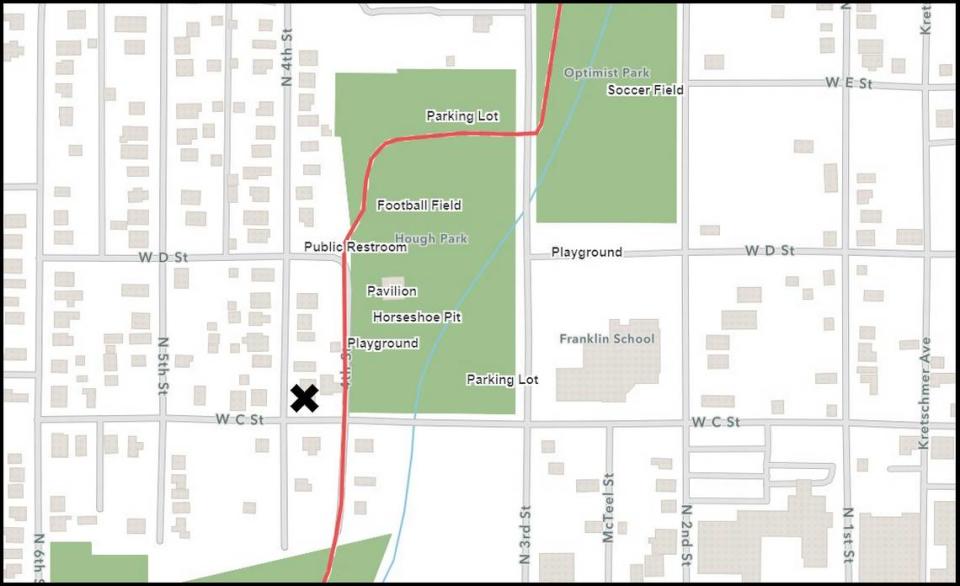
Neighborhood eyesore
One hurdle to investing in the West C Street property is neighborhood deterioration, according to Wallace. He said he has tried to secure the home and garage, but “vagrants” keep breaking in, doing damage and stealing things.
“I’ve lost between $10,000 and $12,000 worth of tools,” Wallace said, adding that police arrested one of the thieves, who had a criminal record related to guns and drugs.
Angevine, the longtime neighbor, agrees that the area has gone downhill, calling it a “crummy” part of town.
Angevine said both Wallace and the city should be doing more to solve the problem at 321 W. C St. because the property borders East Belleville Bikeway, which is used by runners and bicyclists, some from out of town. On the other side is Hough Park, where a Labor Day picnic is held each year.
“You see people riding by here, and they look at that mess up there,” said Angevine, a retired employee in the city’s Public Works Department for more than 40 years. “It’s a shame, really.”
Angevine lives in a neat sided house with a manicured lawn. On a recent weekday, he shook his head in frustration while standing outside the West C Street property, where vandals have broken out garage windows and squatters have covered windows inside the home with cardboard.
A fancy wood cornice below the hipped roof is cracked and broken in places. Plants grow from gutters. The front door knob has been punched out.
Overgrown trees and bushes obscure the home’s back entrance, where the ground is littered with household items, groceries, liquor bottles, clothing and other debris. Someone stole the central air-conditioning unit, Angevine said.
Samantha Zastrow, a neighbor across the street, said no one from the home has ever bothered her, but she hates to see it deteriorate.
“It was such a beautiful home,” Zastrow said. “I grew up in Herman (Missouri), and it’s all historic. My son loves the old structures. He told me he wanted to live in a red brick house, and he wanted to walk to school. That’s why we moved here.”
Franklin Elementary School is on the other side of Hough Park.
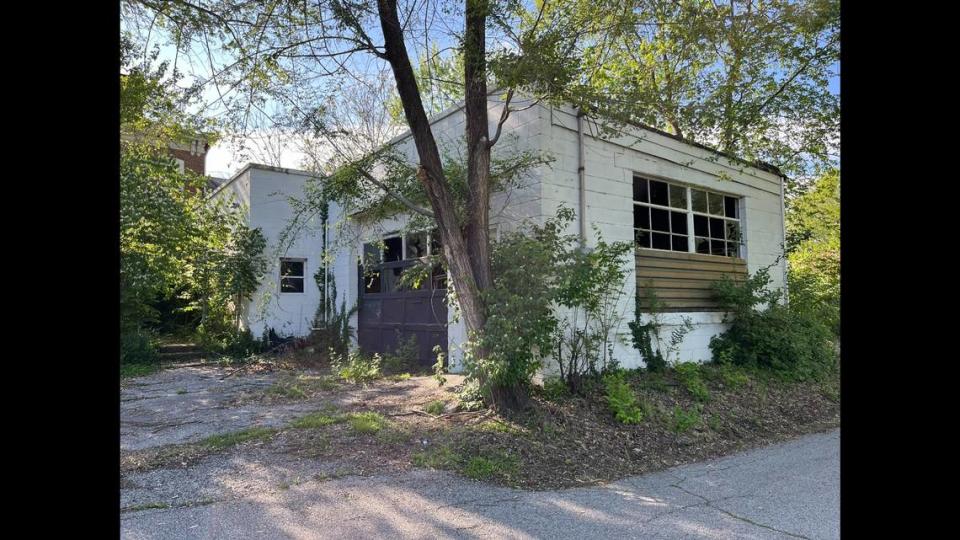
Finding American dream
John Maule immigrated to the United States from Scotland at 17, settled in St. Louis and worked in coal mines, beginning in 1853, according to Brunkow, the historian. He then bought a “spent” (likely depleted) mine for $10.
Maule moved to Caseyville and later Belleville, “sank” (dug and opened) about 15 mines in the region and served one term on Belleville City Council. He had at least 17 children. His first wife, Margaret, a sweetheart from Scotland, died in 1870. His second wife, Sarah, died in 1923.
Maule’s obituary in The Daily Advocate emphasized his business dealings with Grant, who lived outside St. Louis before the Civil War.
“In telling of his acquaintance with General Grant, Maule related to friends and relatives that Grant delivered mine props to him personally, using a team of oxen hitched to a log wagon,” the obituary stated.
Maule was successful, but he apparently faced challenges at times. Brunkow said he deeded the home at 321 W. C St. over to his wife at one point to avoid it being forfeited to creditors.
Six years before Maule died at 94, he sold the home to a blacksmith named George Wellinghoff. By 1939, it was being advertised for sale as a two-family residence with an upstairs apartment.
The Weissenbach family owned the home about 50 years, ending in 2002. Ken Weissenbach built the concrete-block garage for his automotive-repair shop. Eva Weissenbach raised three daughters and became known for her beautiful roses and other flowers.
One daughter, now Debbie Raban, continued to live in the upstairs apartment after getting married. Her mother died in 1997. Raban sold the home and moved to rural Marissa in 2002.
“The neighborhood was getting real bad,” said Raban, 67, a retired special-education aide. “My dad had told me to ‘take the money and run’ (before his 1990 death). But when I was little, it was wonderful. Nobody locked their doors, and everybody knew everybody.”
Raban said her parents’ remodeling projects eliminated some historical features inside the home, but they kept the hardwood staircase and original fireplace in the dining room.
In 2009, the home was singled out as a good example of Italianate architecture in a study conducted by a consulting firm, Commonwealth Cultural Resources Group, during efforts to get a Town of West Belleville Historic District placed on the National Register of Historic Places.
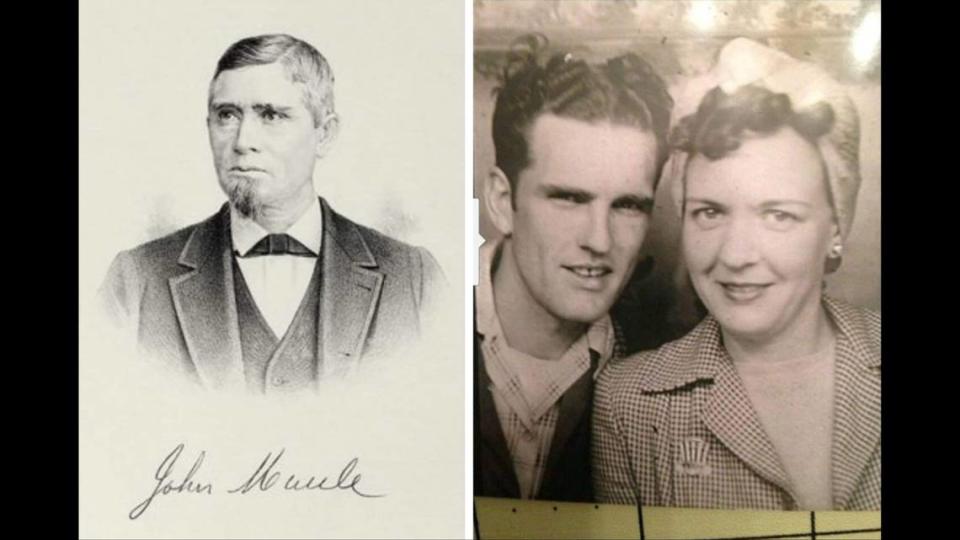
Foreclosure and downturn
The last private owners of the home at 321 W. C St. were Robert and Shirley Rees. They stopped paying property taxes about 10 years ago, according to Strohmeyer, spokesman for the county’s delinquent-tax agent.
The Reeses couldn’t be reached for comment. Angevine said they were nice people who tried to renovate the home, but they struggled to meet housing regulations and ended up moving to Kentucky.
No investors bought delinquent-tax bills on two of the parcels. The Reeses didn’t come up with the money after the three-year redemption period, so the county foreclosed, took ownership and sold the parcels to Wallace for $800 at a tax auction in 2018.
Raven Securities, an investment company owned by Scott Sieron, bought delinquent-tax bills on the other parcel, which included the biggest part of the home. After the three-year redemption period, Sieron relinquished control with a “sale-in-error” filing. The county foreclosed and took ownership in 2021.
Strohmeyer said officials planned to sell the parcel in a tax auction, but they removed the listing after learning that Wallace and another neighbor were exploring the possibility of getting the three parcels converted into two, one for the home and one for the garage.
“They were trying to get something worked out, but it has not been worked out, and I’m not sure where we’re at with this now,” Strohmeyer said.
Wallace said he also tried to negotiate with Sieron before Sieron relinquished control of the property, but those talks fell through.
All that leaves the city contemplating court action, Wallace trying to make a deal, Angevine frustrated by the neighborhood eyesore and Brunkow warning that demolition of the West C Street home would erase a key representation of Belleville history.
Raban, the former resident, knows that she has no say in the matter, but she wishes things had turned out differently.
“I loved that house,” Raban said. “I lived there for 45 years. I have great memories of it, and I know it has historical value. I would love it if someone would save it. ... I had heard that they wanted to demolish it, but I was hoping for a miracle.”
